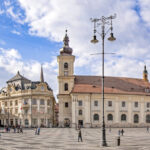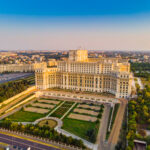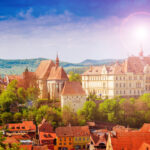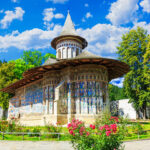Romania is a country full of hidden gems and incredible attractions that are just waiting to be discovered. From ancient fortresses to charming medieval towns, Romania offers a unique travel experience that is unlike any other.
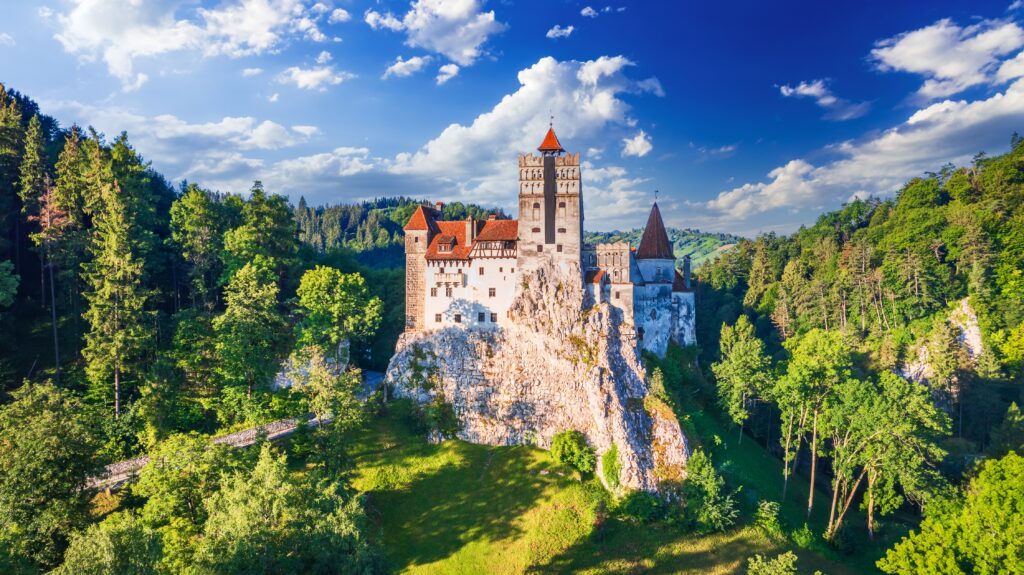
Here are the top ten places to visit in Romania:
Bran Castle
Bran Castle is one of the most iconic landmarks in Romania, known for its connections to the legend of Dracula. While the connection to the infamous vampire is largely fictional, the castle itself is still an impressive sight to behold. Built in the 14th century, Bran Castle features stunning Gothic architecture and is perched on a hilltop overlooking the surrounding countryside.
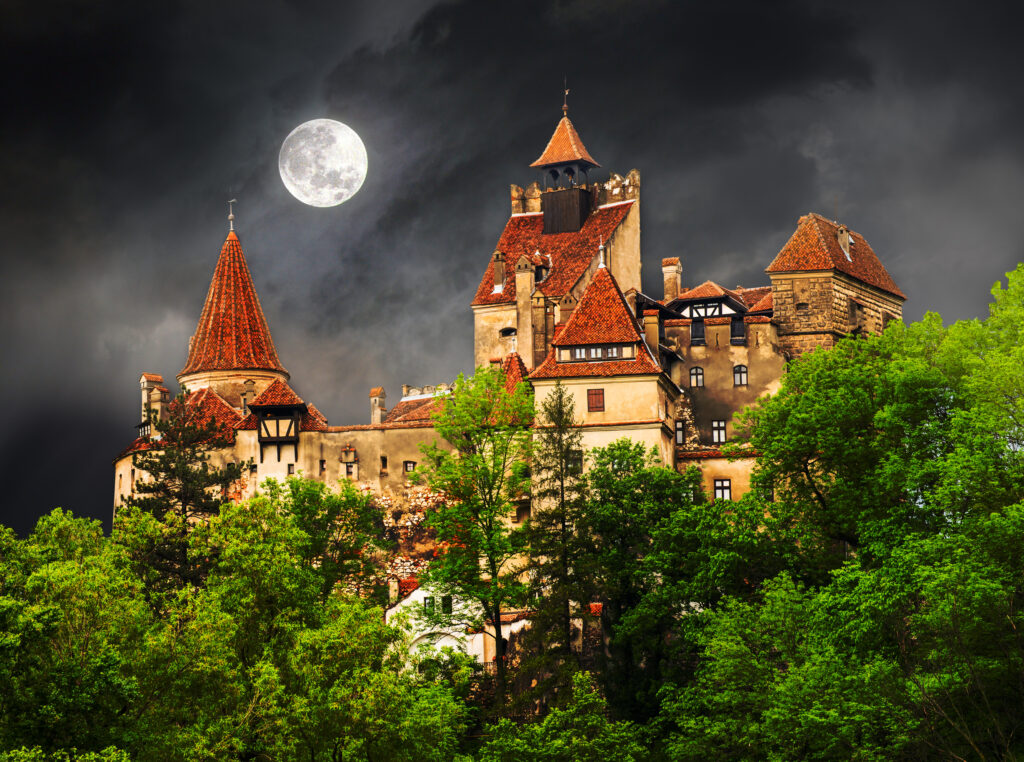
Peles Castle
Located in the town of Sinaia, Peles Castle is a stunning example of Neo-Renaissance architecture. Built in the late 19th century, the castle was designed to be the summer residence of the Romanian royal family. Today, visitors can explore the ornate rooms and admire the intricate woodcarvings, stained glass windows, and exquisite paintings.

Sighisoara
Sighisoara is a well-preserved medieval town in the heart of Transylvania. Known for its narrow cobblestone streets, colorful buildings, and fortified walls, Sighisoara is a great place to step back in time and immerse yourself in Romania’s rich history. The town is also home to the birthplace of Vlad the Impaler, the inspiration for Bram Stoker’s Dracula.

Brasov
Nestled in the Carpathian Mountains, Brasov is a charming medieval town that is full of history and culture. Visitors can explore the narrow streets of the old town, admire the impressive Gothic architecture, and take in the stunning views from the top of Mount Tampa. Other highlights include the Black Church, the largest Gothic church in Romania, and the impressive Bran Castle.

Corvin Castle
Located in the town of Hunedoara, Corvin Castle is one of the most impressive Gothic castles in Romania. Built in the 15th century, the castle features a stunning courtyard, a drawbridge, and a collection of impressive towers and turrets. Visitors can explore the castle’s winding staircases, admire the intricate carvings and frescoes, and even climb to the top of the castle for panoramic views of the surrounding countryside.
The Danube Delta
The Danube Delta is a unique ecosystem that is home to a wide variety of flora and fauna. Located in the southeastern part of Romania, the delta is a paradise for birdwatchers, nature lovers, and photographers. Visitors can take a boat tour through the delta, explore the winding waterways, and spot rare species like pelicans, storks, and herons.

The Painted Monasteries of Bucovina
The painted monasteries of Bucovina are a UNESCO World Heritage Site and a testament to Romania’s rich cultural heritage. Built in the 15th and 16th centuries, these monasteries feature stunning frescoes and murals that depict scenes from the Bible and the lives of the saints. Highlights include the Monastery of Voronet, known for its vivid blue frescoes, and the Monastery of Sucevita, known for its impressive fortified walls.
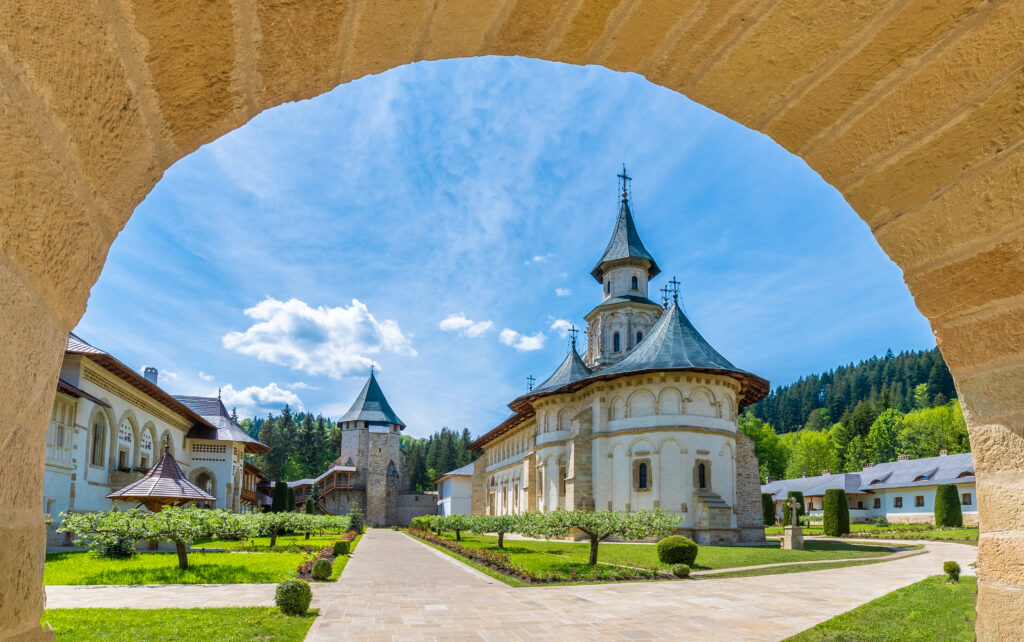
The Transfagarasan Highway
The Transfagarasan Highway is one of the most scenic drives in the world, stretching 90 kilometers through the Carpathian Mountains. Built in the 1970s as a strategic military route, the highway offers breathtaking views of the surrounding mountains, valleys, and waterfalls.
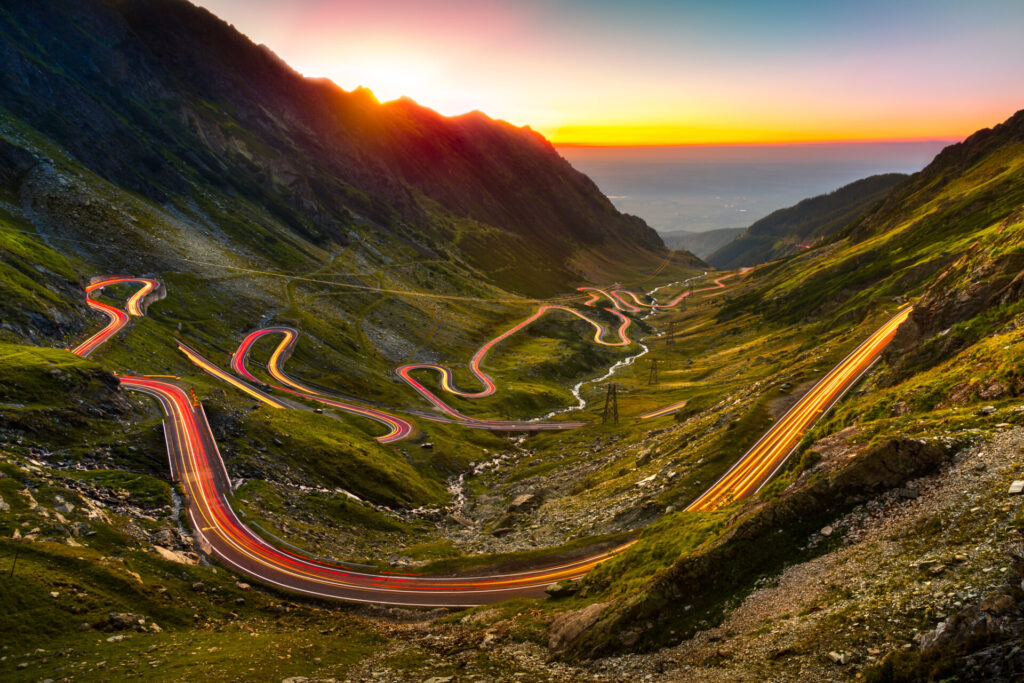
The Places in Romania in the UNESCO World Heritage List
Romania is a country rich in history, culture, and natural beauty. Over the years, it has been recognized by UNESCO for its outstanding landmarks, monuments, and landscapes that are of significant cultural or natural importance to humanity. Here are the places in Romania that are also on the UNESCO World Heritage List:
- The Dacian Fortresses of the Orastie Mountains
The Dacian Fortresses of the Orastie Mountains are a complex of six fortified cities that were built by the ancient Dacians in the 1st century BC. These fortresses were constructed to protect the Dacian population from Roman conquest and invasion. The fortresses are located in the Orastie Mountains and include Sarmizegetusa Regia, the political and religious center of the Dacian kingdom.
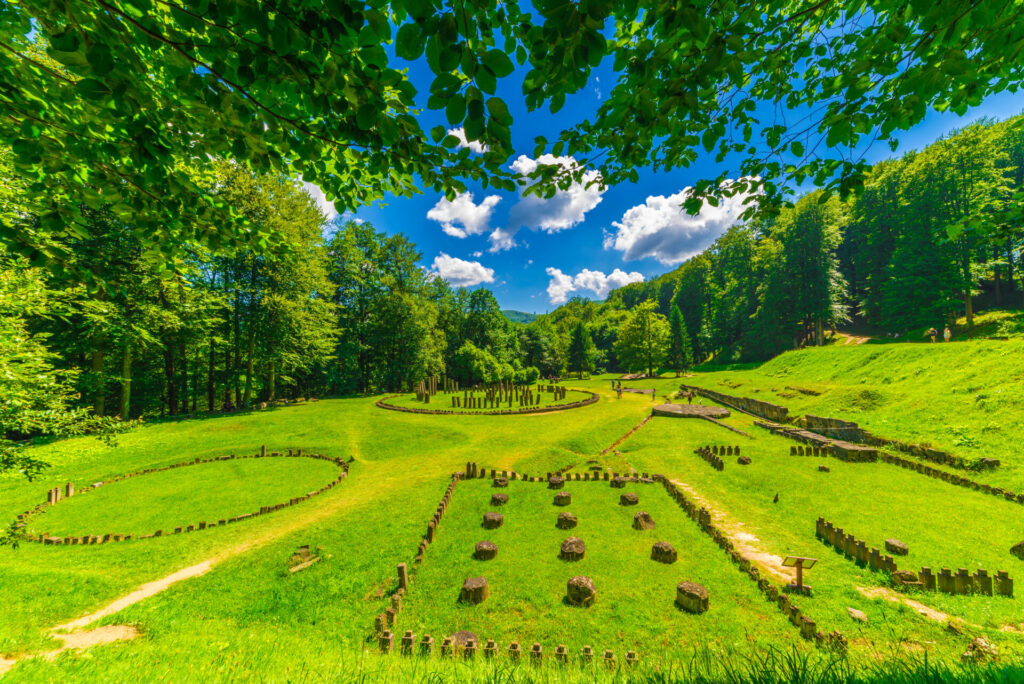
- The Historic Centre of Sighisoara
The historic center of Sighisoara is a well-preserved medieval town that was founded by German craftsmen and merchants in the 12th century. The town is surrounded by fortified walls and towers and is home to several important landmarks, including the Clock Tower, the Church on the Hill, and the Birthplace of Vlad the Impaler. The town’s architecture and layout are a testament to the cultural exchange between the Transylvanian Saxons and the local population.

- The Monastery of Horezu
The Monastery of Horezu is a masterpiece of traditional Romanian architecture and craftsmanship. Located in the foothills of the Carpathian Mountains, the monastery was built in the 18th century and is known for its intricate frescoes, carved wooden doors and windows, and unique ceramic decorations. The monastery is still in use today and is home to a community of nuns who maintain the tradition of ceramic art.
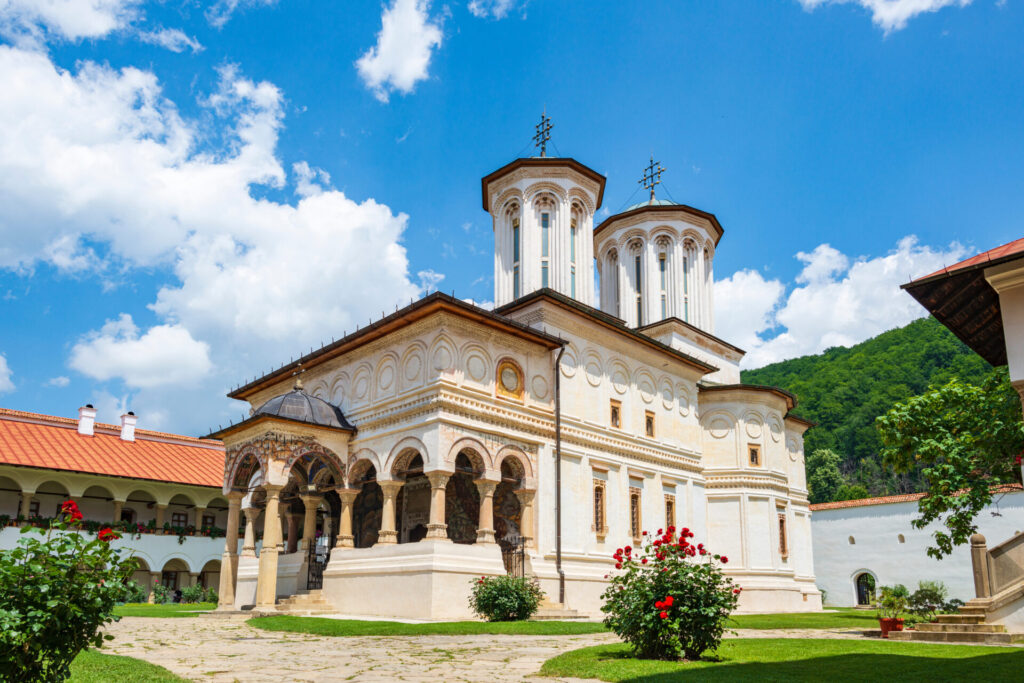
- The Churches of Moldavia
The Churches of Moldavia are a group of eight Eastern Orthodox churches that were built in the 15th and 16th centuries. These churches are known for their unique exterior frescoes, which depict scenes from the Bible and the lives of the saints. The frescoes are considered to be among the best examples of Byzantine art in Europe and have been well-preserved over the centuries.

- The Fortified Churches of Transylvania
The Fortified Churches of Transylvania are a group of seven churches that were built by the Saxons in the 13th and 14th centuries. These churches were built as a defense against invading forces and feature unique architectural elements, such as defensive towers, bastions, and fortified walls. The churches are also known for their impressive interior decorations, including frescoes, sculptures, and altarpieces.

- The Painted Monasteries of Bucovina
The Painted Monasteries of Bucovina are a group of eight Eastern Orthodox monasteries that were built in the 15th and 16th centuries. These monasteries are known for their unique exterior frescoes, which depict scenes from the Bible and the lives of the saints. The frescoes are considered to be among the best examples of Byzantine art in Europe and have been well-preserved over the centuries.
- The Historic Centre of Sibiu
The historic center of Sibiu is a well-preserved medieval town that was founded by German craftsmen and merchants in the 12th century. The town is surrounded by fortified walls and towers and is home to several important landmarks, including the Lutheran Cathedral, the Brukenthal Museum, and the Council Tower. The town’s architecture and layout are a testament to the cultural exchange between the Transylvanian style and the Western style.

Meet Alexander: The Heartbeat Behind ‘A Country A Month’
Journeying through the pages of A Country A Month, you might often feel the rhythm of a storyteller’s heartbeat, pulsating through each line, each image, and each adventure shared. That heartbeat belongs to none other than our remarkable website editor, Alexander.
With a lens in one hand and a pen in the other, Alexander seamlessly marries his passions for photography and writing. His eye captures moments that words can barely describe, yet his eloquence brings those images to life, transcending borders and connecting us all through shared stories. An avid traveler, every country he’s visited has added another chapter to his expansive tale, and through our platform, he generously shares these chapters with us.
His prowess with WordPress ensures that our readers get a seamless and engaging experience every time they land on our website. But beyond the technicalities, what truly sets Alexander apart is his authentic passion for the places he writes about. He doesn’t just tell you about a destination; he takes you there, guiding you through its nooks and crannies with an intimacy only a genuine explorer possesses.
Join us in appreciating Alexander, the guiding spirit of A Country A Month, as he continues to chart new territories, uncover hidden gems, and weave narratives that resonate with wanderers worldwide.

